Chemical Bonding
Chemical bonding is the process by which atoms are held together to form compounds. Atoms can form bonds by gaining, losing, or sharing electrons. There are three main types of chemical bonds: ionic, covalent, and metallic.
Ionic Bonding
In ionic bonding, atoms transfer electrons to achieve a full outer shell. This results in the formation of positively charged ions (cations) and negatively charged ions (anions). These oppositely charged ions are attracted to each other, forming an ionic bond. Ionic compounds are typically formed between metals and nonmetals.
Covalent Bonding
In covalent bonding, atoms share electrons to achieve a full outer shell. This sharing of electrons creates a bond between the atoms. Covalent compounds are typically formed between nonmetals.
Metallic Bonding
In metallic bonding, electrons are delocalized and free to move throughout the structure of the metal. This creates a "sea of electrons" that holds the metal atoms together. Metallic bonding is characteristic of metals and gives them their unique properties, such as conductivity and malleability.
Study Guide
- What is chemical bonding?
- What are the three main types of chemical bonds?
- Describe ionic bonding and give an example of an ionic compound.
- Describe covalent bonding and give an example of a covalent compound.
- Explain metallic bonding and its characteristics.
- How do atoms achieve a full outer shell in ionic bonding?
- What determines the type of bond that forms between atoms?
- Compare and contrast ionic and covalent bonding.
- Discuss the properties of compounds formed by each type of bonding.
- Identify the type of bond present in the following compounds: NaCl, H2O, and Fe.
Use this study guide to review and test your understanding of chemical bonding. Understanding these concepts will help you grasp the foundation of chemistry and the behavior of substances in the natural world.
[Chemical Bonding] Related Worksheets and Study Guides:
.◂Science Worksheets and Study Guides Fifth Grade. Science Worksheets: Acids and bases
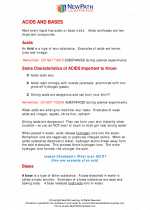
 Activity Lesson
Activity Lesson
 Worksheet/Answer key
Worksheet/Answer key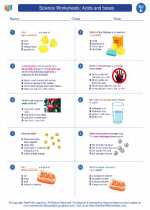
 Worksheet/Answer key
Worksheet/Answer key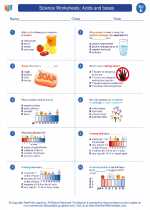
 Worksheet/Answer key
Worksheet/Answer key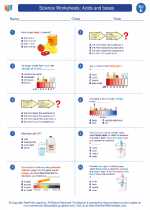
 Worksheet/Answer key
Worksheet/Answer key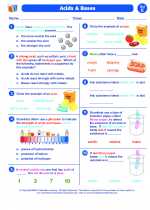
 Vocabulary/Answer key
Vocabulary/Answer key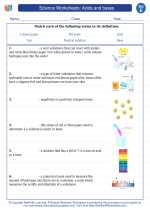
 Vocabulary/Answer key
Vocabulary/Answer key
